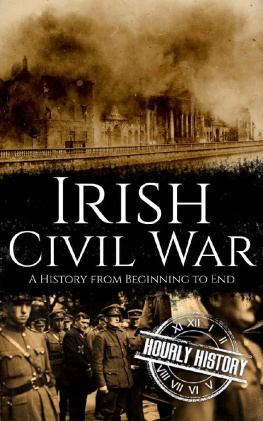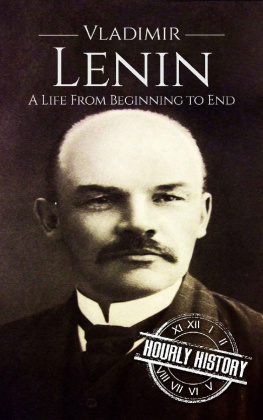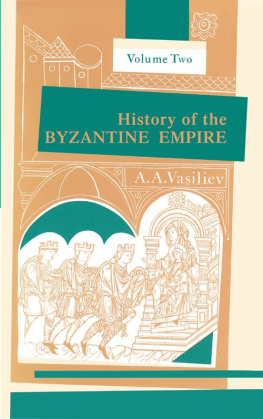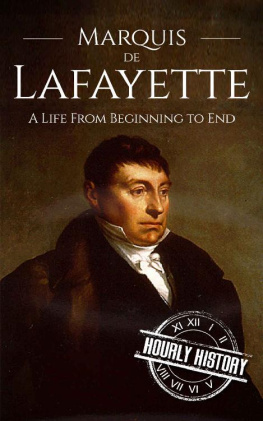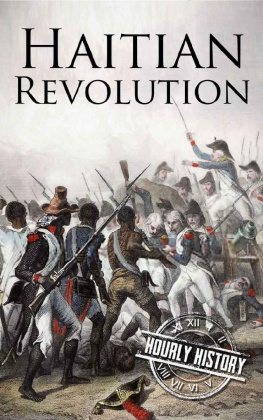Hourly History - Byzantine Empire: A History From Beginning to End
Here you can read online Hourly History - Byzantine Empire: A History From Beginning to End full text of the book (entire story) in english for free. Download pdf and epub, get meaning, cover and reviews about this ebook. year: 2018, publisher: Hourly History, genre: Non-fiction. Description of the work, (preface) as well as reviews are available. Best literature library LitArk.com created for fans of good reading and offers a wide selection of genres:
Romance novel
Science fiction
Adventure
Detective
Science
History
Home and family
Prose
Art
Politics
Computer
Non-fiction
Religion
Business
Children
Humor
Choose a favorite category and find really read worthwhile books. Enjoy immersion in the world of imagination, feel the emotions of the characters or learn something new for yourself, make an fascinating discovery.

- Book:Byzantine Empire: A History From Beginning to End
- Author:
- Publisher:Hourly History
- Genre:
- Year:2018
- Rating:5 / 5
- Favourites:Add to favourites
- Your mark:
- 100
- 1
- 2
- 3
- 4
- 5
Byzantine Empire: A History From Beginning to End: summary, description and annotation
We offer to read an annotation, description, summary or preface (depends on what the author of the book "Byzantine Empire: A History From Beginning to End" wrote himself). If you haven't found the necessary information about the book — write in the comments, we will try to find it.
Byzantine Empire: A History From Beginning to End — read online for free the complete book (whole text) full work
Below is the text of the book, divided by pages. System saving the place of the last page read, allows you to conveniently read the book "Byzantine Empire: A History From Beginning to End" online for free, without having to search again every time where you left off. Put a bookmark, and you can go to the page where you finished reading at any time.
Font size:
Interval:
Bookmark:
Copyright 2017 by Hourly History.
All rights reserved.
The history of the medieval era brings to mind the feudal system with its handful of nobles constantly fighting for territory and the competing forces of various kingdoms and the all-powerful church. But these are pictures of Western Europe. In the east, a different picture emergedone often neglected in our image of the Middle Ages. In the Byzantine Empire, centered around the city of Constantinople (modern Istanbul) and the realm of Asia Minor, a powerful civilization carried the torch of classical civilization for nearly a millennium after the fall of Rome. In Byzantium, the emperor retained ultimate power, allowing for a stable central government. The church and the government largely worked together rather than against one another. Byzantium brought great works of art and architecture into being and preserved Greek literature and knowledge for the ages. Despite a series of formidable foes, rebellions and natural disasters, and the shifting forces of Europe and the east, Byzantium developed a culture like no otherone which continues to impact the world today.
The story of the Byzantine Empire is, of necessity, often a story of the men and women who shaped the empire: the emperors who took the throne peacefully or through bloodshed; the powerful women, wives and mothers, who influenced emperors or held power in their own right; the generals who commanded armies to stem the tide of invasions. While these figures are preserved for us in the records of history, it is left for us to imagine the world they shaped. Byzantium was an agricultural society, a hub of world trade, and the center of the Eastern Church. Merchants, sailors, monks and nuns, farmers, artisans, and tradespeople populated its lands. In this book, youll discover the story of an often-forgotten piece of the past: the intrigues, wars, leaders, political gambles, religious controversies, and cultural developments that shaped Byzantium into a major force in the medieval world.
In 330 CE, the date assigned by historians as the beginning of the Byzantine Empire, the nobles, merchants, soldiers, and sailors pushing their way through the busy streets of Byzantium would not have seen themselves as standing on the edge of a new empire. Instead, they still called themselves RhomaioiRomans, the people of the Roman Empire. The terms Byzantines and the Byzantine Empire would not come into use until the sixteenth century. Until then, the Byzantine Empire was simply the Eastern Roman Empire, the extension of the ancient imperium.
The splitting of the Roman Empire into east and west began almost 50 years before the assigned date marking the start of the Byzantine Empire. In 284, Diocletian rose to power in the east. Within a year, he also took control of the west. He realized that the enormous size of the empire made it difficult to rule, especially at a time of instability. His solution was innovativehe took the position of Augustus, senior emperor, and assigned his friend Maximian the title of Caesar, junior emperor. Before long, Diocletian raised Maximian to Augustus as well and put him in charge of the western part of the empire. Both emperors took Caesars to help them rule the still-expansive halves of the empire. Together, the four rulers formed a tetrarchy; their ability to work together brought stability to the weakening empire. They successfully put down revolts and repelled invaders. In 305, Diocletian and Maximian stepped down from power voluntarily. They aimed to peacefully pass on the empire to their Caesars, who would choose new junior emperors to continue the tetrarchy.
Though Diocletian left systems for taxation and bureaucracy in place that would help to keep the Eastern Roman Empire stable for centuries, his plan to pass on the tetrarchy did not work out the way he intended. In the west, the succession was complicated by the death of the Augustus, Constantius, and his armys subsequent announcement that Constantius son Constantine would be the new Augustus. The eastern Augustus, Galerius, compromised and agreed for Constantine to become the wests Caesar instead. The orderly progression was disrupted, and before long Maximians son Maxentius promoted himself to emperor, conquering the territory of the current western Augustus. Now all four members of the tetrarchy claimed the title of Augustus, and the once cooperative relationships between the emperors disintegrated.
Constantine, allying himself with one of the eastern emperors, marched against Maxentius in 312 CE. Before the battle, he had a famous visionhe claimed to see a shining cross standing above the sun. Constantines contemporary, the historian Eusebius, records that the cross had an inscription instructing the emperor that he would be victorious through this symbol. Eusebius writes that not only Constantine but also his whole army saw the miraculous sign, and later that night, the vision was further explained to Constantine in a dream. Constantine did march on to fight Maxentius in the Battle of Milvian Bridge under a standard in the shape of the cross, and his victory was decisive. This battle both marked Constantines ascension to power over the entirety of the western part of the Roman Empire and his turn toward favoring the Christian religiona change that would greatly affect an empire where Christians had previously been persecuted. Constantines decision would pave the way for the official Christianity of the later Roman Empire, a unification of church and state that would change history. Constantine himself, however, never quite seemed to give up the old religion that had been his upbringing, and scholars have long debated the authenticity of his conversion.
Twelve years after his victory over Maxentius, Constantine acquired the eastern half of the empire as well. In 330, he renamed the city of Byzantium after himself, Constantinople, and declared it the new capital of the Roman Empire. This significant event is the reason historians label the year 330 as the beginning of the Byzantine Empire.
On Constantines death in 337, his three surviving sons, Constantius II, Constans, and Constantine II, stepped up to inherit the rule of the empire. Before long, Constantine II was killed in a battle with Constans, and Constans himself soon died fighting a powerful leader, Magnentius, who rose up to challenge the throne in the west. Constantius marched from the eastern part of the empire to avenge his brother and defeat Magnentius. Consolidating his control of the Roman Empire, he pushed religious reforms farther than his father Constantine had; Constantius closed ancient temples and outlawed pagan rites. Needing help to orchestrate his rule of such a vast empire, he appointed his nephew Julian as Caesar. Upon returning to the capital of Constantinople, Constantius soon had to deal with a Persian invasion. He called for Julian to send troops from the west. But Julian and his armies took this request poorly, and Julians men declared him Augustus, rival to his uncle. Julians armies marched toward Constantinople not to help Constantius, but to conquer him.
On their way there, however, news came that Constantius had already become ill and died. He forgave Julian on his deathbed, leaving the younger emperor as his heir. Twenty-nine-year-old Julian, unbeknownst to his uncle, rejected the Christian religion that Constantine and Constantius had promoted. Julians interests were instead in Hellenic culture and philosophy, and he chose to champion the ancient cult of the sun god. He reversed the religious laws made by Constantius, re-opening temples and doing his best to revive the old religion. While his attempts found some support, on the whole, they were met with ambivalence. Julian hoped that a decisive victory against the Persians would demonstrate the validity of his cause, and so in 363, he marched his armies against the Persians. Unfortunately for Julians ambitions, his campaign was overwhelmed by the power of the Persian city he first approached. Turning toward a secondary target and harassed by Persian attacks, Julians armies began to weaken. Julian himself received an injury that resulted in his death.
Font size:
Interval:
Bookmark:
Similar books «Byzantine Empire: A History From Beginning to End»
Look at similar books to Byzantine Empire: A History From Beginning to End. We have selected literature similar in name and meaning in the hope of providing readers with more options to find new, interesting, not yet read works.
Discussion, reviews of the book Byzantine Empire: A History From Beginning to End and just readers' own opinions. Leave your comments, write what you think about the work, its meaning or the main characters. Specify what exactly you liked and what you didn't like, and why you think so.





